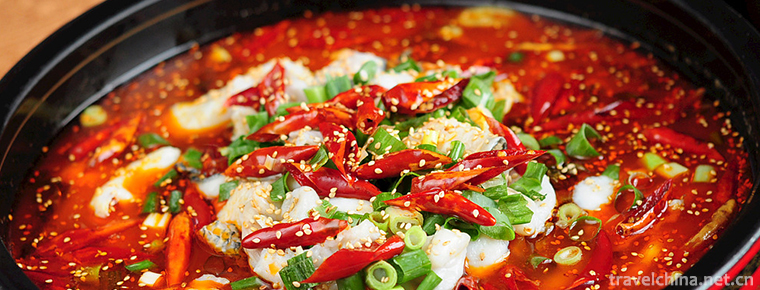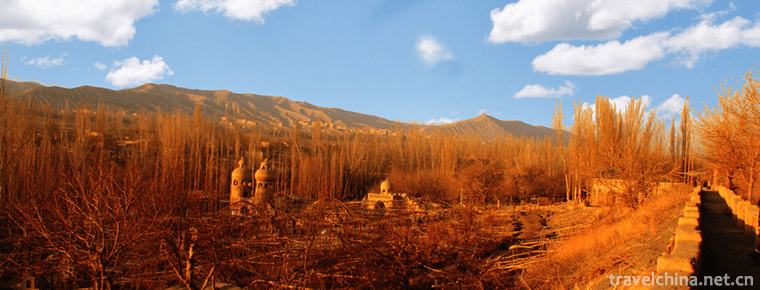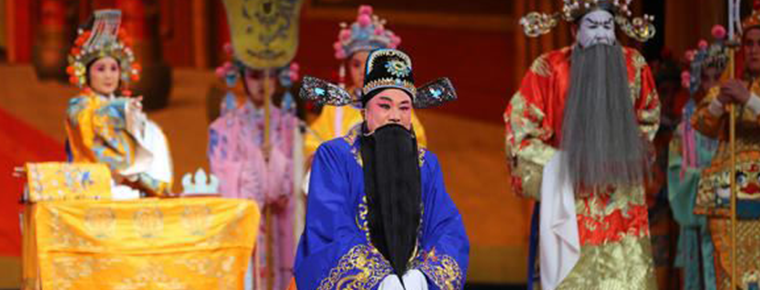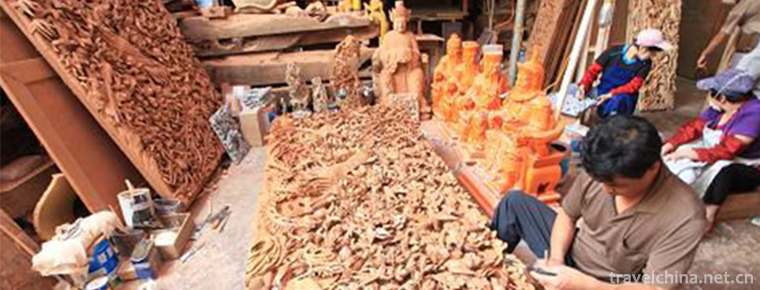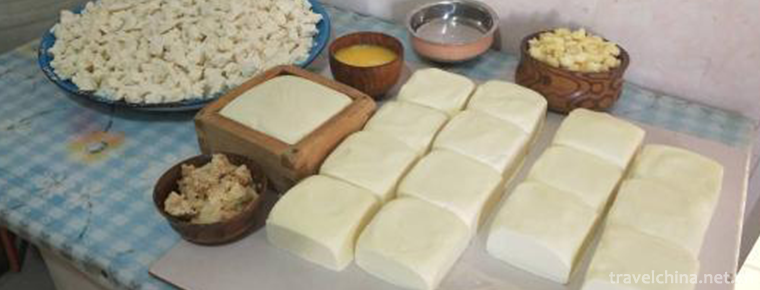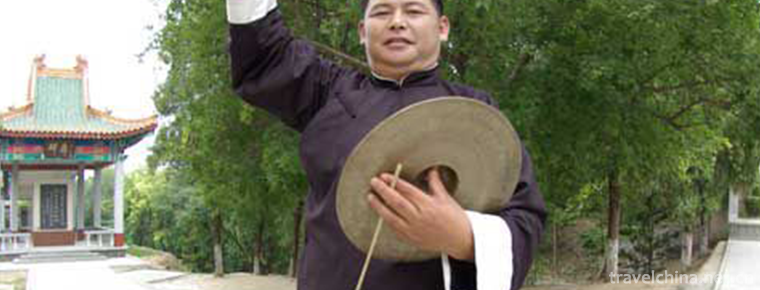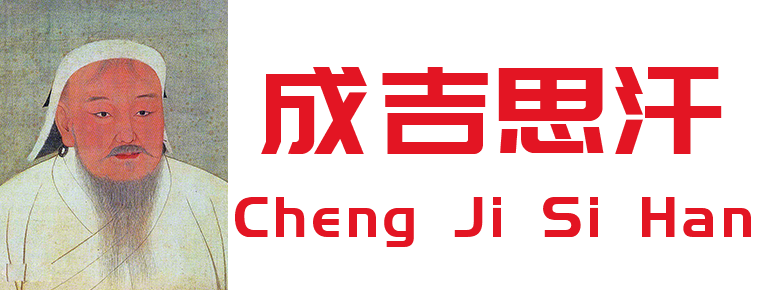Yimeng Mountain Range
Yimeng Mountain Tourist Area is a cross-regional tourism area consisting of the geographical coordinates of Mengshan and Yishan Mountains according to the local tourism department of Shandong Province. It only emerges as a concept of tourism brand. It is essentially different from Yimeng Mountain, Yimeng Revolutionary Old Area, Yimeng Old Area, Yimeng Mountain Area and Yimeng Geography, which are composed of Mengshan Mountains and Yishui Basin.
Yimeng Mountain Tourist Area is located in the south-central part of Shandong Province. It is 180 kilometers apart from Yishan. It is under the jurisdiction of Linyi City and Linqu County respectively. It mainly includes Yunmeng Scenic Area and Guimeng Scenic Area, with a core area of 148 square kilometers. It is the site of the Great Wall of Qi, a world-renowned holy place for longevity. It is now a national 5A-level tourist attraction, a national forest park, a national geological park and a National Water Conservancy Scenic spot.
Mount Mengshan is also a famous historical and cultural mountain. For more than 2000 years, it has been the focus of scholars, poets and emperors. In the Analects of Confucius, it is recorded that King Bin once offered sacrifices to Mount Meng. During the Spring and Autumn Period and the Warring States Period, Confucius, Zhuangzhou, Lao Lai Zi and Guiguzi, the representatives of Confucianism, Taoism and strategists, were left here. Guiguzi practiced and taught here. His disciples were over 100. The famous ones were Sun Bin, Pang Juan, Su Qin and Zhang Yi. Cai Yong, a historian of the Han Dynasty, once lived in seclusion on this mountain. Li Bai and Du Fu, the great poets of the Tang Dynasty, once traveled to Mount Mengshan in company. Du Fu wrote, "Yu is also a Mongolian guest in the East, and he pities you as a brother." Drunk sleeping in autumn, hand in hand with the same day of travel. Tang Xuanzong once led a group of ministers to mount Mengshan; Su Shi traveled to Mount Mengshan to recite poetry; Ming Dynasty writer Gong Nai wrote "Mengshan Fu" to recite Mount Mengshan; Emperor Kangxi's winter tour to Mount Mengshan left poems of "horseshoe broken Qiongyao Road, cut off the peak of Mount Mengshan"; Emperor Qianlong's South tour to Mount Mengshan left "Mount Linggai does not violate Yao's command, showing my poetry. In the beautiful poems of Yufeng, and Wang Xinjian's "Eastern Meng Xing" "Qingfeng across Yishui, Songtao Manmengshan. The sky is low and foggy, and the road is dangerous. The Eagle patrols the Yuyu, farming cattle and guarding wheat fields. Looking back on the place where he came to visit, the poems such as "A thousand and a great deal" are all full of praise for Mount Mengshan.
Mengshan has a long history and profound cultural connotations that attract worldwide attention. The earliest Regional Geographic book in China, Shu Yugong, says, "Mengyu is a man of art." It is believed that as early as the Xia Dynasty, crops had been planted in Mengshan and Yushan belts. Since the founding of the People's Republic of China, dozens of Dawenkou culture, Longshan culture and Yueshi culture sites have been found in the foothills of Mount Mengshan, which have been confirmed. In the Western Zhou Dynasty, King Cheng Fengzhi worshipped Mount Mengshan in the sun of Mount Mengshan, which showed that Mount Mengshan was among the famous mountains in China at that time. During the Spring and Autumn Period, Dr. Lu Moss wrote in his ode "The Palace of Heaven": "Mount Tai Yanyan, as Lu Bang looks at, is in a state of heaven and is in a state of desolation." He regards the possession of Mount Tai and Mount Mengshan as the glory of the State of Lu. Hu Bingyan, a modern poet, wrote: "The dragon is green and fresh, and it looks at the trickle on its own. Yadai rocks are marvelous, and drums and birds are singing in the morning and evening.
The Western Zhou Dynasty feuded the state of Qi and Lu in the north and south of Mount Mengshan. While the two great powers entered the country militarily and politically, the Chinese culture began to spread here. It and the local Dongyi culture from mutual barrier to mutual integration, so that the culture of Mount Mengshan and its surrounding vast areas has been unprecedented prosperity, and this phenomenon has continued and developed through dynasties. The stone tombs of Han Dynasty portraits found in Mengshan area are amazing in their architectural and carving skills. Others, such as the stone tablets of the Western Han Dynasty, the tombs of the Eastern Han Dynasty, and Xu Ziyuding in the Spring and Autumn Period, are the essence of the above phenomena, some of which belong to the national cultural relics protection units, and some belong to the national first-level cultural relics. Due to the development of social economy and the nurturing of advanced culture, celebrities emerged in Mengshan area. Xunzi, Zengzi, Mengtan, Liu Hong, Kuangheng, Zhuge Liang, Wang Xizhi, Yan Zhenqing, Gong Ying, Zuo Bao and many other outstanding figures made outstanding contributions to the development of our society in different fields.
Historically, Taoism and Buddhism in Mount Mengshan were flourishing. Monks and Taoists have a special love for Mount Mengshan. They regard it as a holy place for cultivating fruits and raising longevity. The main Taoist temples are Jade Palace, Yuwang Temple, Qingxu Temple, Cuiyun Temple, Jiulong Palace, Guanyin Palace, Chengtian Palace and Cining Palace. The most popular temples are Mengshan Temple, Mingguang Temple, Conch Temple and Yuntai Temple. As early as the Five Dynasties, He Kang, a member of Jinshui Ministry, practiced Mongshan, and Su Dongpo in the Northern Song Dynasty had contacts with his eighty-year-old disciple Qiao Tong and wrote poems for donation. Jia Wen, the master of Yuxuguan in Mengshan of Song Dynasty, was summoned by Huizong of Song Dynasty in Bianjing in the first year of Xuanhe (1119), and was given Duxiu and Ziyi. During the Ming and Qing Dynasties, Mengshan Qingxuguan belonged to Quanzhen Taoist Huashan School, which was closely related to Beijing Baiyun Guan, the "first jungle in the world" of Taoism. It is these religious activities that have left many grand palaces and pavilions in Mount Mengshan, and filled with the mysterious atmosphere of yellow rolls of green lanterns and the ringing of bells and rocks.
During the war of national and democratic liberation, Mount Mengshan was an important part of the revolutionary base area in Yimeng Mountains. During the Anti-Japanese War, the Communist Party of China led the Shandong Party, Government and Army Headquarters and the Command Headquarters of the 115th Division of the Eighth Route Army, where they led the Shandong army and people to fight bravely, and established and expanded various anti-Japanese base areas in Shandong. During the War of Liberation, the East China Bureau of the Central Committee of the Communist Party of China and the command organs of the East China Field Army organized the world-famous Meng Lianggu Campaign here. Today, some of the major revolutionary historic events and famous battlefields, as well as revolutionary martyr cemeteries, have been well protected, and some of them have newly built Memorial buildings.
Introduction
Yunmeng Scenic Area in Mengshan, Shandong Province, is located in the Mengshan Tourist Area. Since its development in 1993, it has invested nearly one billion yuan. Based on the principle of protection before development and protection while developing, it has won the National Forest Park, AAAAA Tourist Area, National Geological Park and National Green by virtue of its typical ecological environment and unique natural resources. Nearly 100 industry certifications and honorary titles, such as the Year of Civilization, have become the core scenic spots of Yimeng Mountain tourism, and the typical representative of the good scenery of Yimeng Mountain. The total area of Mengshan National Forest Park in Yimeng Mountain Tourist Area is 55,000 mu, with rich and colorful natural resources. With wildlife: 10 families and 15 species of mammals, 28 families and 76 species of birds, more than 100 families and 900 species of plants, the forest vegetation coverage rate is more than 95%. It is known as "Baililin Sea, Natural Classroom". In 1999, monitoring by the Ecology Research Center of the Chinese Academy of Sciences, the negative ion content in the air of the scenic spot was 854 167 per cubic centimeter, 195 times that of Beijing, ranking first in the country and the highest ever measured by the center. Known as "Natural Oxygen Bar" and "Super Clean Area", it has become "the best green fitness tourism resort in China". The rich natural resources of Mount Mengshan contain rich cultural connotations. There were emperors and generals, literati and Mohists stationed in Mount Mengshan and chanted about Mount Mengshan. Confucius "climb Dongshan (Mengshan, in ancient times called Dongshan, Dongmeng) and Xiaolu". Li Bai and Du Fu traveled with Mengshan to leave behind such good sentences as "Drunk sleeping in autumn, walking together with the sun". Su Shi's poems about Mengshan said, "Don't surprise the change of Sangtian in the Bohai Sea, see Yunmeng and Laoze Spring". The Ming Dynasty writer Gong Ying wrote "Mengshan Fu" and recited Mengshan Mountain; there are also folk allusions. There are numerous relics such as Qin bricks, Han tiles, ancient temples and stone tablets. The Yunmeng scenic spot of Yimeng Mountain tourist area relies on natural resources and takes eco-tourism as its theme, and gradually develops into a green tourist resort of leisure, vacation and fitness for the whole province and even the whole country. The total investment of the scenic spot is 320 million yuan, and a series of infrastructure and scenic spots have been developed. The total length of roads in the scenic spot is more than 40 kilometers, forming a three-vertical and two-horizontal circular line. The construction of roads is 10 kilometers, stone steps are more than 32,000, wooden footpaths are 3990 meters (Guinness World Record has been applied for, becoming the first footpath in the world). It is built in a parking lot of 20,000 square meters, equipped with 20 sightseeing and tourist cars, and built a length of 1,200 meters. Passenger ropeway. Two three-star hotels have been built in the scenic area, a tourist shopping market has been built, new scenic spots such as Luyuan, Pharmacy Garden, Bird Garden, Bamboo Garden, Garden and large stone archway have been developed, and folk customs and entertainment projects such as forest assault car, forest drift, forest ropeway, picking garden, pharmacy garden, Yuwangmiao and Diamond Gate Square have been completed. Information, health, safety and other facilities. The scenic spot integrates eating, living, traveling, traveling, shopping and entertainment, providing high-quality services for tourists in all directions.
Natural landscape
Yunmeng scenic spot in Yimeng Mountain tourist area has different landscapes throughout the year: verdant hills in spring, sea and forest blossoms; waterfalls in summer, misty clouds; hilly red leaves in autumn, full of dyed forests; silver wrapped in winter, jade carved ice.
Diamond gate
Diamond Culture Square is located at the entrance of Yunmeng Scenic Spot, the main scenic spot of Mengshan, with a total area of 20,000 square meters. It consists of Diamond Square, Diamond Gate and Guanyin Hall. The front corridor of the square is engraved with the Sutra of Diamond Prajna Boromi. At the front of the square are seven stone-carved Buddhist pagodas, which record the sacred sites of the past seven Buddhas. Inside the square is the Prajna Boromi Diamond Gate. In the center of the square is the Holy Spring Pool, where Guanyin Bodhisattva sits in the middle of lotus flowers. Under the square is the Guanyin Hall. Square building style integrates Chinese and Western, Yin and Yang are harmonious. The Diamond Culture Square is designed by Shi Shengzhi of Huangen Temple in Thailand with his dream creativity. The whole group of stone carvings are elaborately produced by Hui'an stone carvings family in Fujian Province. The craft is exquisite and meticulous, which can be handed down from generation to generation. It is an important landscape of Yimeng Mountain tourism.
China falls
This waterfall is a rare Triassic waterfall in the north of the Yangtze River. It is named for the contour of the cliff wall which is similar to the Chinese territory. The water jumped from a cliff about 100 meters high, and was blocked by two cliffs in the middle. After a little circling, it rose and fell straight down, forming a typical overlapping fall. Waterfalls fall from the sky, such as the galaxy upside down, magnificent, magnificent. The water fog around the waterfall, rainbow, gorgeous and colorful, and the magnificent peaks, green forest and sea constitute a beautiful natural picture. In the middle of the stone cliff on the left side of the waterfall is a stone gate covered by a water curtain, so it is also known as the Watercurtain Cave Waterfall. It is said that Sun Bin and Pang Juan in the Warring States Period opened every 500 years in the place where they learned and practiced Buddhism and Taoism and became Immortals with the Ghost Guzi King. Gong Nao, a poet of the Ming Dynasty, said in a poem, "Did the Milky Way come down and fly over ten thousand feet?" As you can see, you don't ask Kuanglu any more.
Rain King Temple
Yuwang Temple was built in Mingchang period of Jin Dynasty. It was abandoned several times and lasted for thousands of years. It is one of the main Taoist concepts in Mount Mengshan. In the Song Dynasty, the Mongolian God was once named "Jiahui Zhaoying King", so the Yuwang Temple was also called Jiahui Zhaoying King Temple. In the second year of Guangxu in Qing Dynasty, Yin Rensui, a dolomite Taoist, built Cuiyun View on the old site, erected Jiahui Zhaoying King's Temple, rained King's Hall and Lv Zu's Hall, planted tens of thousands of trees, Yanyang Valley, cloudy days, offered sacrifices to the King of Rain, prayed for rain and Ling, and incense fire was quite prosperous. Now the Yuwang Temple is rebuilt for the new site in 1995. The eaves and carved buildings are solemn and solemn. The main hall is dedicated to the God of Yuwang. It is the God of rain specially worshipped in Mengshan area. The South chamber is for Guanyin Bodhisattva, and the North chamber is for Ghost Valley and Huang Daxian. New Yuwang Temple coexists with Cuiyun View. Legend has it that famous immortals envy Menzi and Zhong Ion to worship gods and pray for rain. There are many stories about the experience of praying for rain in the history of Mount Mengshan. There are 72 watering rains in Mount Mengshan every year, and there are still heavy rain sacrifices on March 3 every year. For thousands of years, Yuwang Temple has been endowed with the spirit of heaven and earth to protect the smooth weather and the people's well-being.
Yun Meng Feng
Yunmeng Peak is one of the peaks of Mount Meng at an altitude of 1030 meters. It looks like a giant tortoise from a distance. Legend has it that in ancient times, only Dayunmeng Peak emerged from the water, blocking the drifting dead wood and decaying branches. After the flood subsided, the peak was covered with firewood, so it was also called the "salary-hanging child" by the local people. Dayun Mengfeng is steep and towering, straight into the clouds, standing on the ridge of the sea of clouds, beautiful and unique, the peak has a tortoise look at the moon, husband and wife stone, three county stone and other scenic spots. Mount Dayun Mengfeng, you can enjoy the infinite scenery of Mount Mengshan. In the Ming Dynasty, Gong Nao said in a poem, "Meng Shan is the highest mountain with tens of thousands of smoke and clouds on it." I want to stand at the top of the mountain, but count lotus from outside.
Natural oxygen warehouse
According to the monitoring of the research center, there are 854 167 negative ions per cubic centimeter in the air of the scenic spot, which is 195 times higher than that in Beijing, ranking first in the country and the highest value ever measured by the center. Known as "Natural Oxygen Bar" and "Super Clean Area", it has become "the best green fitness tourism resort in China". Mount Mengshan is rich in natural resources, which contains rich cultural connotations. There were emperors and generals, literati and Mohists who stayed in Mount Mengshan and chanted about Mount Mengshan. Confucius "climb Dongshan (Mengshan, in ancient times known as Dongshan, Dongmeng) and Xiaolu". Li Bai and Du Fu traveled with Mengshan to leave behind such good sentences as "Drunk sleeping in autumn, walking hand in hand with the sun". Su Shi's poems about Mengshan said, "Don't surprise the Bohai Sea Santian change, see Yunmeng and Laoze Spring". The Ming Dynasty writer Gong Nao wrote "Mengshan Fu". He chanted about Mengshan; and there were folk allusions and flows. There are numerous stories, such as Qin bricks, Han tiles, ancient temples, stone tablets and so on. Yunmeng Scenic Spot in Yimeng Mountain Tourist Area Based on Natural Resources
Relying on the theme of eco-tourism, it has gradually developed into a green tourism resort for leisure, vacation and fitness in the whole province and even in the whole country. The total investment of the scenic spot is 320 million yuan, and a series of infrastructure and scenic spots have been developed. The total length of roads in the scenic spot is more than 40 kilometers, forming a three-vertical and two-horizontal circular line. The construction of roads is 10 kilometers, stone steps are more than 32,000, wooden footpaths are 3990 meters (Guinness World Record has been applied for, becoming the first footpath in the world). It is built in a parking lot of 20,000 square meters, equipped with 20 sightseeing and tourist cars, and built a length of 1,200 meters. Passenger ropeway. Two three-star hotels have been built in the scenic area, a tourist shopping market has been built, new scenic spots such as Luyuan, Pharmacy Garden, Bird Garden, Bamboo Garden, Garden and large stone archway have been developed, and folk customs and entertainment projects such as forest assault car, forest drift, forest ropeway, picking garden, pharmacy garden, Yuwangmiao and Diamond Gate Square have been completed. Information, health, safety and other facilities. The scenic spot integrates eating, living, traveling, traveling, shopping and entertainment, providing high-quality services for tourists in all directions.










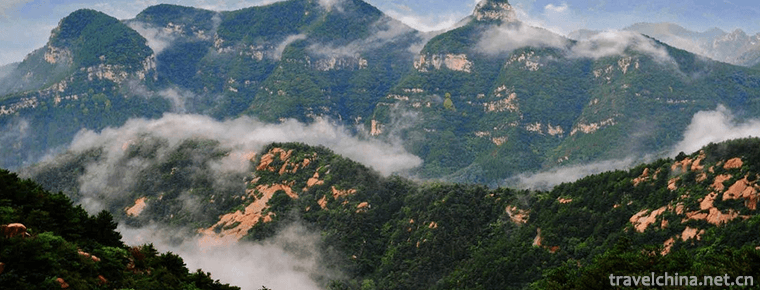
-
Sliced Fish in Hot Chili Oil
Boiled fish, also known as river boiled boiled fish and boiled fish fillet, was first popular in Cui Yun Township, Yubei District, Chongqing..
Views: 247 Time 2018-10-27 -
Huangguoshu Waterfalls Scenic Area
Huangguoshu Scenic Spot is a key national scenic spot, located in southwest Guizhou Province, 128 kilometers away from Guiyang City, the capital of Guizhou Province.
Views: 167 Time 2018-12-12 -
Putaogou Scenic Area Turpan City
The Putaogou Scenic Area in Turpan City is located in the Flame Mountain, 11 kilometers northeast of Turpan City, Xinjiang. It is about 8 kilometers long in the South and 2 kilometers wide in the East.
Views: 172 Time 2018-12-12 -
Huai Bang
Huai Bang (also known as Huai Diao, commonly known as Huai Qing Bangzi, Lao Huai Bang, Xiao Bang Opera and Xiao Ban Opera), is one of the traditional local operas in Henan Province and one of the nati.
Views: 93 Time 2019-05-04 -
Money board
Money board is a traditional rap art in Sichuan, Guizhou and other places. It originated in Chengdu and Chongqing more than 300 years ago, and gradually spread to Yunnan.
Views: 162 Time 2019-05-07 -
Wood carving
Wood sculpture is a kind of sculpture, which is often called "folk craft" in our country. Wood carving can be divided into three categories: solid round carving, root carving and relief carv.
Views: 124 Time 2019-06-06 -
Dairy Products Production Techniques
Mongolian phonetic translation. Mongolian drinks. Also known as "white food", that is, dairy products. Milk, mare's milk, goat's milk, camel's milk, cream of milk skin, cheese, dried milk, s.
Views: 131 Time 2019-06-07 -
Nuwa Festival
Nuwa Festival is an ancient traditional folk custom and folk religious and cultural activity. Legend has it that the eighteenth day of the third month of the lunar calendar is Nuwa's birthday. Therefo.
Views: 243 Time 2019-06-08 -
Laozi Shandong Province
Shandong Laozi is a traditional opera art form which spreads in Shandong Province. It evolved from the ancient "lotus flower falls". Laozi instruments are mainly cymbals (commonly known as G.
Views: 164 Time 2019-06-13 -
Genghis Khan Cheng Ji Si Han
He was a Jin Jin. He was from May 31, 1162 to August 25, 1227. Yeke Mongghol Ulus Khan, outstanding in world history. Politician , Militarist.
Views: 147 Time 2019-09-07 -
Dragon elbow mountain
Longcub mountain, also known as yuxu mountain, is located in Longquan Township, northwest of Huili County, Liangshan Yi Autonomous Prefecture, Sichuan Province, China. It is also known as yuxu mountain at the junction of Baiguowan .
Views: 347 Time 2020-10-16 -
Meishan administrative division
Meishan City has 6 county-level administrative divisions (Municipal District 2, county 4), and 80 township level administrative divisions (street 13, town 62, township 5). It covers an area of 7134 square kilometers and has a population of 3.5 million. Meishan Municipal People's Government in Dongpo District Meizhou Avenue West Section 2..
Views: 326 Time 2020-12-18
